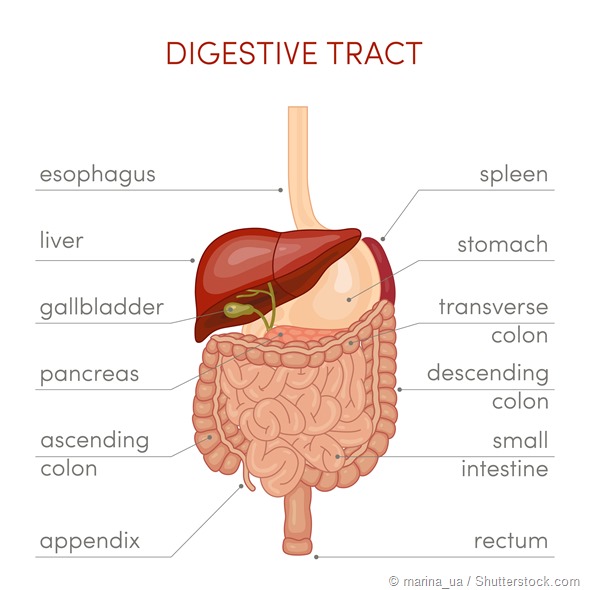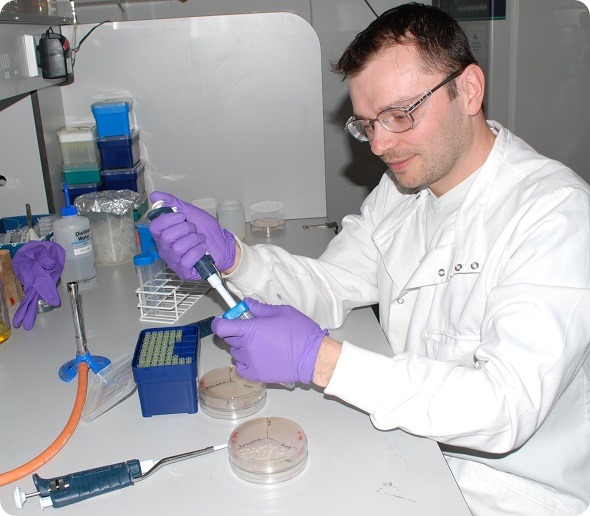Why is correct placement of nasogastric (NG) tubes vital?
Nasogastric tubes are placed directly into the stomach in order to feed or medicate patients. If an NG tube accidentally goes into the lung instead, which can happen, it can cause serious harm to the patient, with food, liquid or medication potentially entering the lung. This is a persistent and ongoing issue of medical error which can be fatal.

NG tubes can also inadvertently be placed into the oesophagus, or even through the stomach into the small intestine, leading to patients not being fed properly, and other problems. These misplacements are not as serious, but are still problematic.
What is the current method for determining correct placement?
A number of methods have been described and practiced. It varies around the world, but the only recommended approved method in the UK is to draw an aspirate – a small amount of liquid – through the tube using a syringe. This draws out a sample of liquid (aspirate) from the stomach or wherever the tube is, and the pH of that liquid is then tested using a pH strip.
The current guideline says that the aspirate pH has to be lower than 5.5 in order to start feeding or to medicate. It is presumed that a pH of 5.5 indicates the presence of hydrochloric acid (HCl) from the stomach, which you wouldn't find in the lung. Similarly, the pH in the small intestine would be more neutral.
Why is the current method prone to misinterpretation?
Because it is presumed that your stomach always has acid in it, but that’s not correct. Quite often people don't have acid in their stomach.
Up to 40 % of people in hospital can be on antacid medications, sometimes because they are anxious, or simply because it’s just a common medication.
If people are on medication that reduces their stomach acid or perhaps if they haven't eaten and there’s little or no acid present, then there will not be an acidic pH response when you draw the aspirate, and then you can't be sure if the tube is in the stomach. After an inconclusive acid test, X-ray is used as the gold standard method to check the position of the tube.
However, according to Professor George Hanna at St. Mary’s Hospital, London, this is not an ideal method either; X-ray adds to the cost, time and patient inconvenience and is still open to misinterpretation. There is also the safety implication of repeated X-rays, particularly in children.
The use of X-ray varies in different countries though and, in America, everybody is X-rayed to confirm the tube position.

How does Ingenza’s diagnostic assay work?
One of our colleagues brought this challenge to our attention and came up with the idea of finding a different marker for placing tubes other than looking at acid in the stomach. The enzyme human gastric lipase, an enzyme in the stomach that hydrolyses compounds called esters – including fats such as triglycerides – was particularly appropriate, offering a consistently present and more reliable marker. When you digest these molecules, this hydrolysis cleaves the molecule apart and releases acid and alcohol.
The presence of lipase can be detected in exactly the same way as the presence of gastric acid. You simply take the pH strip, and add a small amount of a triglyceride that the enzyme would break down to acid. Then, when you take a sample from the stomach, if there's hydrochloric acid present, you'll get an acidic pH response as before. However, if there's no hydrochloric acid but the lipase is present, it will break down the triglyceride that is on the paper, and there will still be an acidic pH response. Therefore, lipase acts as a marker that covers any occasions where there might not be enough gastric acid in the stomach to give an acidic pH response.

The idea, in a nutshell, is a modification of the test to include triglyceride on the pH paper, so you're not doing anything different. Samples from the stomach have the enzyme present in them already, so that's an important thing to understand. We're not doing anything to the patient – the patient is being sampled in exactly the same way. We're just providing a means to detect this enzyme, as a secondary way of producing acid on the pH strip.
How specific and sensitive is the test?
We have tested this in our laboratory. We added triglyceride to pH paper and found that adding lipase reduced the pH; it showed a pH response simply as a result of triglyceride being hydrolysed.
Early experimentation showed that the pH fell by about 2 to 3 units, so from pH 7 to about pH 5 or pH 4. This is important, early data allowed us to obtain preliminary grant funding – a £100,000 grant from SMART: Scotland – to do a trial including around 30 patients with Professor Hanna at St. Mary's. We ran the trial so that each sample that was taken from a patient was tested on conventional pH paper, which was 65 % sensitive, and on our modified paper, which was 97 % sensitive. The important things to look at were sensitivity and specificity.
Specificity is all about making sure that you detect the location of the tube, and the sensitivity is about how often you can confirm the correct positioning of the tube.
Specificity is important because you never want to decide it's in the stomach, when it's actually in the lung. You never want false positives, and our method was 100 % specific in the sense that it never gave any false positives.
The existing method is also 100 % specific in that it doesn't give false positives, but it gives a lot of false negatives. Its sensitivity is 65 % versus 97 %, which is a very, very big difference. However, this was based on a relatively small number of patient samples.
Were you surprised by the results?
Not really. We expected the new test to be much more sensitive because, according to the literature, human gastric lipase is not inhibited by drugs. It won't be affected by antacid medication and it seems to be pretty much always present in the stomach. It's even there in newborns and children, so it's a very fundamentally important enzyme.
We knew that the current test often fails when an aspirate is drawn, but doesn't have much acid in it. We thought it was quite likely that the enzyme would be there, so we were not really surprised.
We were very pleased that it was 97 % correct. The only reason it wasn't 100 % is that one patient did have a particularly alkaline stomach pH of 8.5, and we don't know the reason for that yet. In that circumstance, there obviously wasn't acid, but the enzyme loses its activity in alkaline conditions, and so it wasn't even able to react. However, all that meant was that one person would have required an X-ray. That's the important thing because, using the conventional method, about 12 people would have required an X-ray.
In what ways do you plan to develop the test further?
The trial was on quite a small number of patients, so the next step is to obtain a more substantial amount of funding so that we can conduct a much larger trial.
We applied to the Innovate UK Biomedical Catalyst competition and we were successful. At the end of last year, we were awarded a grant of about £800,000.
Imperial is recruiting a large number – aiming for 200 or more – of patients across various hospitals from the Imperial Healthcare Trust, which includes St. Mary's, Charing Cross, Hammersmith and Chelsea and Westminster hospitals. We will develop the test papers, which were developed by a standard laboratory practice before. The papers impregnated with the triglyceride substrate will be made to the ISO 13485 clinical quality control standard, so there is already quality compliance consideration for manufacturing.
Those papers will be based on standard pH paper in clinical use, modified by us to the ISO standard. Rather than a pH strip that can be used for lots of different things and has about seven or eight different colours on it, we're going to develop a test that works more like a pregnancy test. This will be a second generation device, which is all or nothing and will either say ‘feed’ or ‘don't feed’. It will give a single read-out, perhaps in the form of a colour change, because we think that will also contribute to removing ambiguity.
Professor Hanna wrote a report for the government a few years ago which described this problem and recommended that, in order to avoid any ambiguity and medical error, the cut-off for feeding should be a pH of less than 4. The recommendation from that report wasn't implemented, for the simple reason that had that new standard been applied, there would have been a huge increase in the number of tests that, based on pH, were not clear. As a result, even more X-rays would have been needed.
What we want to do is to provide a test that allows a new, safer standard to be implemented and ensure that fewer X-rays are needed than before. That's the approach we're trying to develop.
What do you think the future holds for improving NG tube placement and how do Ingenza plan to contribute?
I think there's a huge need for this test, as there's already a lot of cost involved and an ongoing issue of patient safety. It has a great chance of being very successful and could be implemented in the NHS as well as other countries, notably in parts of the developing world where X-ray support to confirm correct tube placement is largely unavailable.
The test is cost effective; no expensive equipment is required, there is virtually no change in bedside procedure and so no additional training of end users, and there is no delay in getting the read-out.
It's very compliant with existing practice, but ought to provide greater sensitivity. We will now either take it forward in house at Ingenza, manufacturing the paper and commercialising it ourselves, or partner with other end users, such as an existing diagnostic company or paper manufacturer. We're exploring all of those opportunities at the moment.
We have an excellent relationship with the team at St. Mary's in Paddington, where Professor Hanna leads the National Institute of Health Research Diagnostic Evidence Co-operative London (NIHR DEC London) – a government initiative to try to help facilitate the progression of innovations and new technology into the NHS.
We think that this synergy with the DEC will greatly help with the test evaluation and, if the trial is successful, may speed up its adoption by the NHS.
Where can readers find more information?
http://www.ingenza.com/
About Ian Fotheringham
Ian Fotheringham received a Ph.D. in Molecular Biology from the University of Glasgow, UK in 1986. He joined the NutraSweet division of Monsanto in Chicago, USA, constructing microbes to produce the Aspartame® sweetener. From 1993 he continued developing large scale bioprocesses with NSC Technologies and Great Lakes Fine Chemicals.
In 2003 he co-founded Ingenza, an Edinburgh, UK, based Industrial Biotechnology SME with a unique range of proprietary enabling technologies. Now a leader in microbial strain improvement, synthetic biology, fermentation and bioprocess development, Ingenza works with industrial partners worldwide to commercialise state of the art biomanufacturing processes. Ian has published 35 papers and articles and holds 8 current patents.